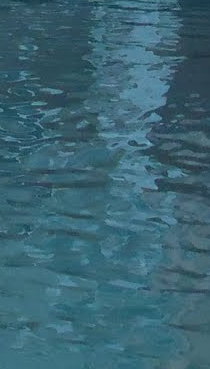Navigating the Canals: Making and Moving Venetian Renaissance Paintings

Despite the impressive scholarly attention that the Venice of the Renaissance has commanded, there is as yet no overarching study devoted to the challenges posed by the city’s unique physical and geographical environment on the manufacture and delivery of large-scale paintings in the lagoon city.
This AHRC funded collaborative doctoral project, supervised by Dr Louise Bourdua (Warwick) and Dr Matthias Wivel (National Gallery), investigates two aspects of this problem: the handling and transport of paintings from the painter’s workshop to their intended destination, and how their supports were made across time, and whether innovations were made in response to Venice’s challenging physical environment. The research will focus on Venetian paintings from the fifteenth & sixteenth centuries in order to plot changes over time as the binding agent in painting evolved from egg to oil and the paintings’ supports shifted from wood to canvas. This chronological scope also corresponds with Venice’s expansion into the mainland, and the growth of new distant markets. It will therefore enable discussion of environmental impact on transport beyond the lagoon, from water to land, over plains and mountains.
Fifteenth-century records testify to the importance of shipping and travel when considering the commission and making of a painting. A century later, even though canvas had displaced panel as the painting support in Venice, paintings including Titian’s did not always reach their destination in perfect condition. Paint fell immediately after the installation of an altarpiece in a local church, and foreign orders led to complaints, disputes and even intimidation from no less than the King of Spain who exhorted the painter to take more care in shipping. Was this on account of the paintings having been rolled up? Indeed were all paintings necessarily rolled up for transport during their initial transit from workshop to church or palace? Did Venetian painters or specialist handlers invent new methods to minimize the consequences of potential damage caused by transport? Was damage a key factor in the shift of support from wood to panel, and did size matter? How often did painters travel or indeed accompany paintings? And who was responsible for packing and shipping when the Serenissima shipped paintings as diplomatic gifts? As for how the supports of sixteenth-century Venetian paintings were made, is there more to be discovered regarding the stitching together of canvas of different weaves (by whom?), its supply source (from tarpaulin and sail merchants?), and whether it was new or old (recycled?).
The project aims to address these neglected areas and add to our comprehension of Venice as a unique centre of artistic production. It will advance our knowledge of transport and handling of Venetian Renaissance paintings by assembling and merging published findings with new evidence from the archives. Its other aim is to mine untapped repositories with the potential to shed light on the subsequent journeys of the National Gallery’s Venetian paintings, from Venice or the Veneto to their current known provenance. The creation of a database of documentary evidence regarding aspects of transport and painting support will be made available online, providing an invaluable resource for future research. This evidence will be linked to an interactive digital map of Venice on which will be plotted sites relevant to the National Gallery’s Venetian paintings. Finally, the Gallery’s paintings as physical objects, capable of revealing whether aspects of their condition might relate to transport and how their support was constructed, will provide test cases for any new documentary discoveries.
The doctoral project will contribute to the strategic objective of the National Gallery to develop broad collaborative approaches to the study of its collection of Venetian painting. As a result, our knowledge of handling and transporting Venetian Renaissance paintings from the painter’s workshop to their original destination will be increased. Our understanding of the involvement of numerous magistracies in the regulatory aspects of manufacture, commerce and transport will be deepened. The potential impact of Venice’s challenging physical environment on the creation of a variety of supports over times will be examined and tested. The intricacies regarding who made canvas supports will be unraveled. In addition, scholars and the wider public will gain access to historical data and documentary evidence through publically accessible webpages and interactive digital maps.
Update:
Benedetta Pacini was selected for this doctoral scholarship, completed her thesis in November 2019, and was successfully examined in the spring of 2020.


